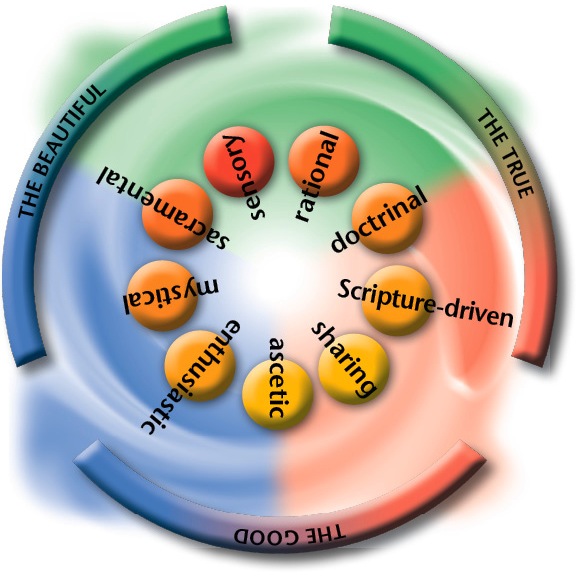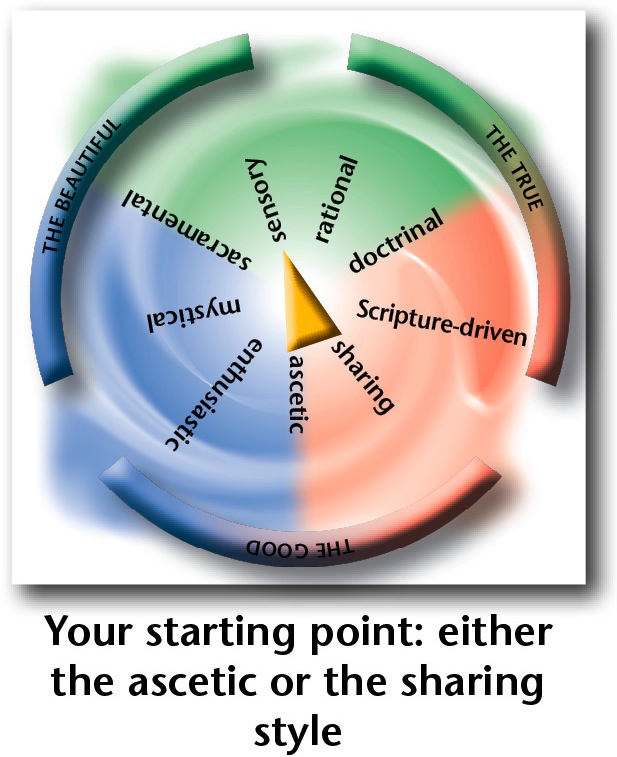What fascinates me about my sensory mentor Jack
J
ack sees spiritual significance where others merely see “the world.” Jack perceives where others don‘t perceive anything at all. And that which he perceives, he would like others to perceive. I had dinner with Jack in a restaurant, the food was excellent (which is important for Jack), the waiter was exceptionally friendly. Jack paid her compliments the entire time, commending her for her work, for her appearance, for her apparently warmhearted character. When receiving the check, he asked her for her name and wrote it on his paper napkin: “Danielle.” Then he went to the restaurant manager and said, in a way that could be well overheard, “I have never been served as excellently as by Danielle. She is an incredible woman. You can be proud of having her as an employee.” Jack beamed with joy, the manager beamed with joy—and Danielle, who watched us from a distance, beamed even more. This was “her day.” Today a beam of God‘s light had reached her life.
 Graphical representation of the sensory style: It is essential to understand the positioning of this style within the Trinitarian Compass. Christians with a sensory style should take into special consideration the two opposite styles (sharing and ascetic) as these throw light on the dark side of the sensory style.
Graphical representation of the sensory style: It is essential to understand the positioning of this style within the Trinitarian Compass. Christians with a sensory style should take into special consideration the two opposite styles (sharing and ascetic) as these throw light on the dark side of the sensory style.
On the one hand, the sensory style belongs to the green style family; on the other hand, to the aesthetic style family. Depending on its leaning toward one of its two neighbor styles, it can manifest itself in a more sacramental or more rational variety. For Christians with a sensory style, it is most natural to express their spirituality through their five senses. The strength of this style is its well-developed perceptual capacity, including its ability to enjoy God‘s creation; its peril is a dependency on what is sensually perceived as beautiful (hedonism).
 Christians with a sensory style perceive God through their five senses. Enjoying his wonderful creation is an essential part of their experience with God.
Christians with a sensory style perceive God through their five senses. Enjoying his wonderful creation is an essential part of their experience with God.
To those approaching the sensory style from the opposite side
 You are thinking about exploring the sensory style, and your own spiritual style is either the sharing or the ascetic style—the first one stressing ministry, commitment, and self-forgetfulness; the second one stressing voluntary renouncement of worldly pleasures. The way you have experienced God may make it difficult for you to see anything “spiritual” within the sensory style. You may point to the fact that behind the sensory style there lurks the danger of hedonism. And, you have hit the nail right on the head. That is clearly the peril of the sensory style, and your experiences in your own spiritual style have sharpened your eyes to that peril. Your worries are absolutely justified.
You are thinking about exploring the sensory style, and your own spiritual style is either the sharing or the ascetic style—the first one stressing ministry, commitment, and self-forgetfulness; the second one stressing voluntary renouncement of worldly pleasures. The way you have experienced God may make it difficult for you to see anything “spiritual” within the sensory style. You may point to the fact that behind the sensory style there lurks the danger of hedonism. And, you have hit the nail right on the head. That is clearly the peril of the sensory style, and your experiences in your own spiritual style have sharpened your eyes to that peril. Your worries are absolutely justified.
However, right now we aren‘t speaking about Christians representing the sensory style, but about you. Since you are so strongly rooted in the sharing or ascetic style, you don‘t have to be overly concerned about these dangers for yourself. You’re right, hedonism is a danger, but it is not your danger, at least not your primary danger. The foundation that has been laid in your life is too strong for you to worry about deteriorating into a hedonistic “feel-good” faith.
Your goal should definitely not be to become like Christians with a sensory style. Rather, as you interact with your opposite style, you will begin to see your own perils. Could it be that one of the reasons you are so critical about the sensory style is that it reveals your own shadows? You are grounded in Scripture enough to know that—contrary to Greek thinking—the body (and not just the soul) is the creation of a good God. After each act of creation, the Creator stepped back to admire his handiwork: “And God saw that it was good.“ From its origins, Christianity has been an embodied spirituality, insisting on the goodness of body as well as soul. God created our senses. “Enjoyment through the senses was his idea, not Satan‘s,” as Gary Thomas puts it.
Could it be that your own spirituality is shaped by a primarily negative view of the body, or even of “the world” as a whole? If so, interaction with the sensory style can help you correct this one-sidedness. In the end you will not abandon your native style, but you will become more effective, more joyful, more contagious, and more mature in your own style. Your spiritual style brings so many needed things into the body of Christ. If you could come to grips with your shadow areas, it would be an enormous step ahead in becoming the very person that God had in mind when he created you.
Further topics in the above chapter of the full version of the book
Jack, my mentor for the sensory style - Jack‘s worldly appearance - Three-Color architecture - Expressing your beliefs physically - The Quilt Ministry - The core of the sensory style: Expressing faith through the senses - A bodily spirituality - The two wings of the sensory style - The strengths of the sensory style - The perils of the sensory style - Spirituality from below

